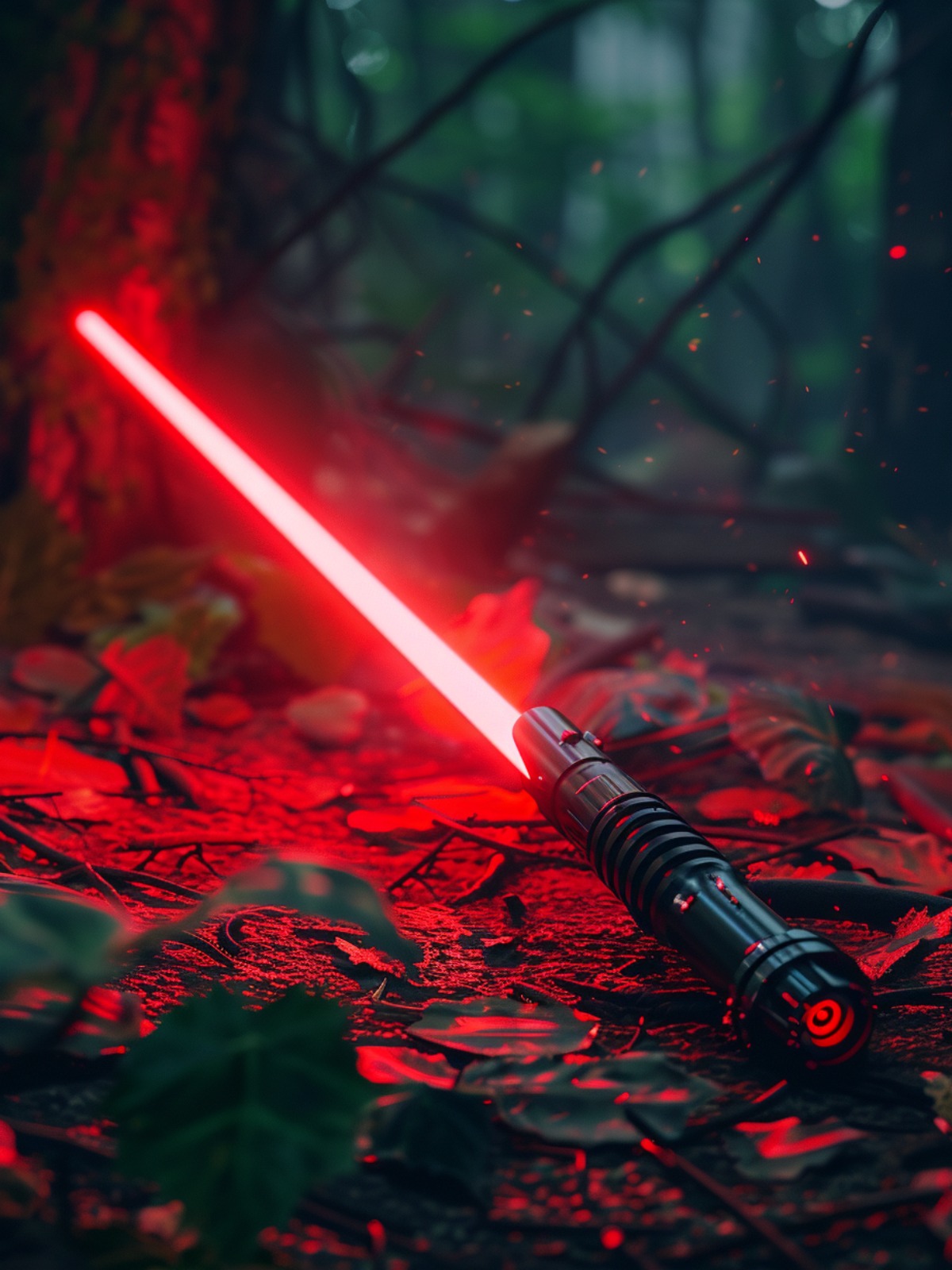In the Star Wars universe, lightsabers are not just weapons; they’re an extension of their wielders, glowing and humming with the power of the Force.
One peculiar feature of these elegant weapons, noticed by keen-eyed fans, is that they often turn off when dropped.
This has led to much speculation and theorizing among the Star Wars community, as the films and canonical materials don’t provide a clear explanation.
Let’s dive into some of the fan theories that try to make sense of this phenomenon.
Table of Contents
1. Safety Mechanism Theory
One popular theory suggests that lightsabers include a built-in safety mechanism, possibly a heat sensor or pressure sensor in the hilt, which detects when the lightsaber is no longer in the hand of its user.
This mechanism is thought to automatically deactivate the saber to prevent accidental injuries or damage.
This idea seems plausible given the advanced technology in the Star Wars galaxy and the potentially disastrous consequences of an uncontrolled lightsaber.
2. Intentional Design for Combat Efficiency
Another theory suggests that lightsabers are intentionally designed to turn off when dropped to improve combat tactics.
This feature allows a Jedi or Sith to throw their lightsaber at a target and have it deactivate automatically, either mid-air or upon impact.
This prevents the saber from causing unintended damage on its return flight.
For example, consider how Darth Vader masterfully throws his lightsaber like a boomerang to attack Luke in Return of the Jedi.
3. Force-Sensitive Activation and Kyber Crystal Connection
Some fans believe that lightsabers are specifically tuned to their owners through the Force, meaning that only the intended user can effectively wield and control them.
According to this theory, the lightsaber deactivates as a response to losing the physical connection with its Force-sensitive owner, possibly guided by an internal mechanism that senses the Force.
This idea is further enriched by the role of the Kyber crystal, the heart of the lightsaber that channels the Force.
Some speculate that the bond between a Jedi and their Kyber crystal influences the lightsaber’s operation, including its activation state.
In this view, a lightsaber deactivates upon being dropped as the connection between the crystal and its wielder is momentarily severed, indicating a sort of ‘safety mode’ activated by the crystal itself.
4. Hidden Activation Mechanisms
An additional fan theory suggests that some Jedi customize their lightsabers by positioning the activation button inside the hilt, rather than on the outside.
This clever design ensures that only those with knowledge of its mechanism—typically Force users—can activate the weapon.
This setup serves as a security measure to prevent non-Force users from wielding a lightsaber.
This ability not only adds a layer of security but also provides a tactical advantage in battle, allowing Jedi or Sith to engage or disengage their lightsabers as the situation demands.
Last Words

Isn’t it great to explore different ideas about why lightsabers turn off when dropped? I love how these theories add even more intrigue to the Star Wars universe.
Each concept, from safety mechanisms to combat efficiencies, shows the amazing creativity of the fans.
So the next time a lightsaber turns off in the middle of a battle, just think of all the fun explanations we’ve come up with.
It’s this kind of imagination that makes being part of the Star Wars community so enjoyable!

